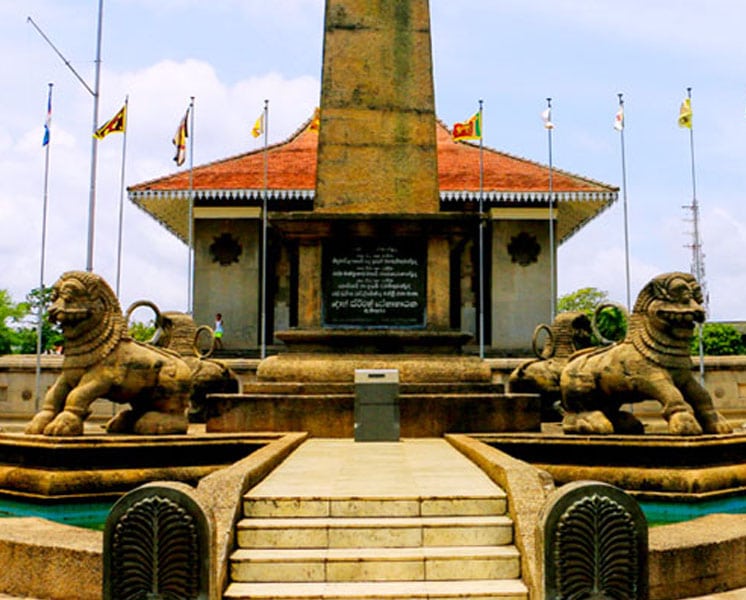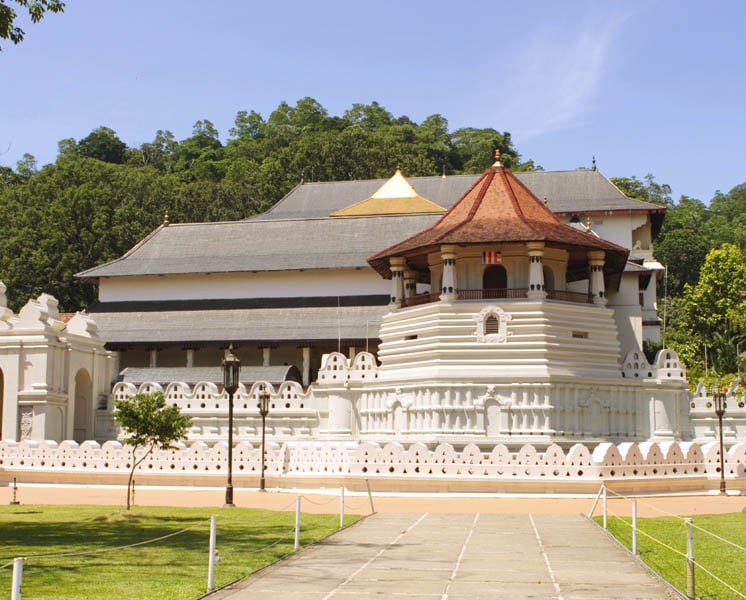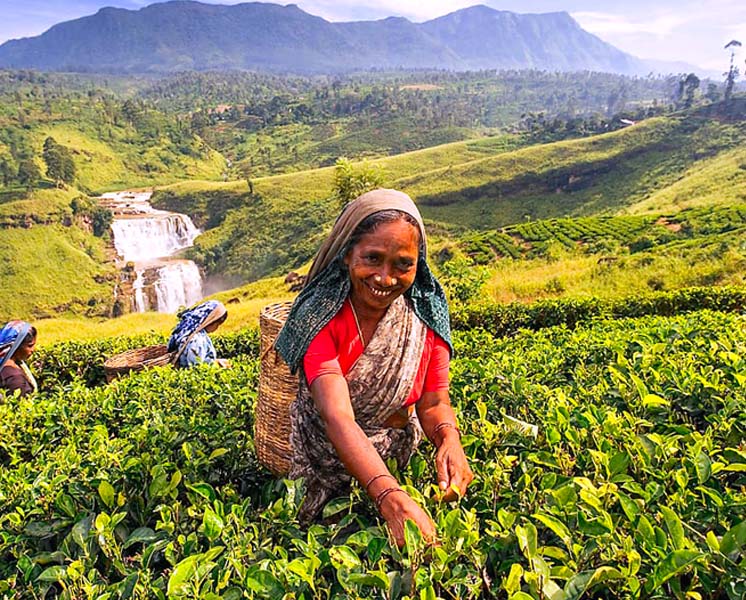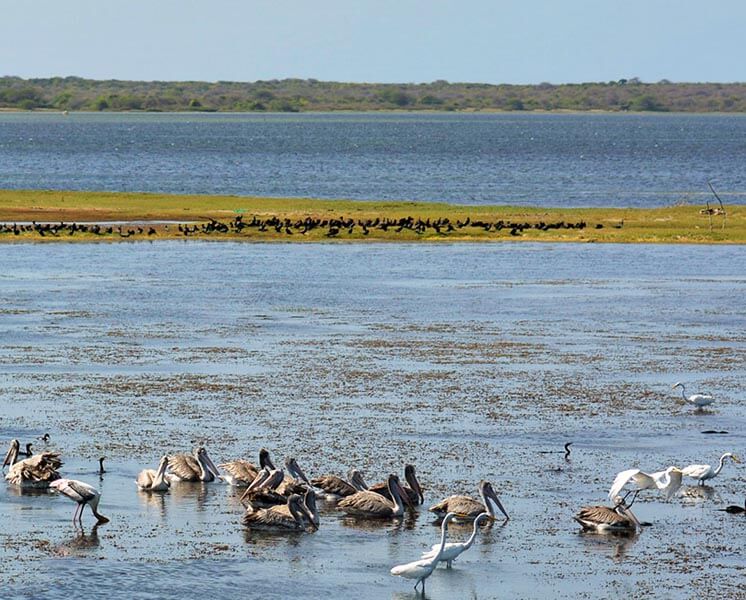Itinerary of
22 Days 21 Nights Tour
DAY 01 : Airport / Colombo
Visiting & Activities: Colombo City Tour: Galleface Green / Light House / BMICH / Town Hall / Gangarama Temple / SimaMalaka / Beira Lake / World Trade Centre / independence Square / Lotus Tower / Lotus Theater / Old Parliament / Fort City etc.
Although it’s unlikely it will reclaim its 19th-century moniker ‘the garden city of the East’, Colombo has nevertheless emerged as a must-see stop in Sri Lanka. No longer just the sprawling city you have to endure on your way to the beaches, it has become a worthy destination in its own right and makes an excellent start – or finish – to your Sri Lankan adventures.
The legacies of colonial Colombo’s garden roots are still very much intact along its often-shady boulevards. Fort is a compelling place thanks to ongoing restoration of its landmark colonial architecture, while Pettah brims with markets and rampant commerce. Even traffic-clogged Galle Rd is getting spiffier with glossy new hotel complexes.
Colombo’s cosmopolitan side supports ever-more stylish eateries, galleries and shops. Surprises abound: with a little exploration you’ll find great local food, characterful shops and tiny, convivial cafes. Meanwhile, a building boom like no other is transforming the city’s skyline
Colombo Shopping: One Galleface Mall / Colombo City Center / Marino Mall / Crestcat Boulevard / Majestic City / Liberty Plaza / Cotton Collection / ODEL / House of Fashion / Lakpahana / Laksala / One Galle etc.
Shopping in Colombo can be unwieldy for the uninitiated. There are few grand pedestrian walkways to meander down and no readily identifiable “shopping district” to lose yourself in. And, if it’s your first time in Colombo, you’ve probably also got a list of monuments to tick off – few of which are near any decent shops where you can find interesting, contemporary Sri Lankan products (the best kind of souvenir to my mind).
However, setting some time aside in your itinerary to explore Colombo’s better shops is well worth your while and one which you won’t be able to replicate in another part of your Sri Lankan trip.It’s an opportunity to experience the explosion of Sri Lankan creativity following the war years, one which has resulted in an offering of clothing, accessories, jewellery, homewares, interiors and even books unparalleled in at least the 30-odd years prior. The hallmarks of this Sri Lankan productivity are goods which are ethically made, environmentally sustainable, chic and uniquely Sri Lankan in style, aesthetic or provenance. Colombo may not be Paris, but its products are par excellence.
DAY 02 : Negombo / Chilaw
Visiting & Activities: On the way visit Fish market / Muthurajawela Marsh Boat Tour
Visit Negombo Fish Market: Each day, fishers take their oruvas (outrigger canoes) and go out in search of the fish for which Negombo is famous. They’re a fine sight as they sweep home into the lagoon after a fishing trip.
Muthurajawela Marsh Boat Tour: Muthurajawela is the largest saline coastal peat bog in Sri Lanka. The Marsh together with the Negombo Lagoon form an integrated coastal wetland eco-system with marsh lagoon complex itself estimated to have originated around the year 5000 BC. The northern section of the marsh covering an area of 1,777ha was declared a sanctuary in July 1996 under the fauna & flora protection ordinance. The marsh is a major local and tourist attraction, primarily used for sightseeing and boating tours, and the area also supports local agriculture and forestry. Visitors to the region are guided through the sanctuary areas by the staff of the Muthurajawela Marsh Centre to avoid serious harm to the marsh ecosystem.
DAY 03 & 04 : Chilaw
Visiting & Activities: Wilpattu Sanctuary / Wilpattu National Park Jeep Safari to see Leopards, Bears and etc / Watch Dolphins in Kalpitiya
Wilpattu National Park is a park located on the island of Sri Lanka. The unique feature of this park is the existence of “Willus” – Natural, sand-rimmed water basins or depressions that fill with rainwater. Located in the Northwest coast lowland dry zone of Sri Lanka.
The season for dolphin watching in the Kalpitiya area starts mid-November and ends end of March.
DAY 05 : Anuradapura / Trincomalee
Visiting & Activities: On the way Anuradhapura Historical City
The ruins of Anuradhapura are one of South Asia’s most evocative sights. The sprawling complex contains a rich collection of archaeological and architectural wonders: enormous dagobas (brick stupas), ancient pools and crumbling temples, built during Anuradhapura’s thousand years of rule over Sri Lanka. Today, several of the sites remain in use as holy places and temples; frequent ceremonies give Anuradhapura a vibrancy that’s a sharp contrast to the museum-like ambience at Polonnaruwa.
Visiting Spots in Anuradhapura:
Anuradhapura Ruins, MahamevnawaDhammachethiya Buddhist Monastery/ Jetavanarama monastery, RatnaPrasada/Jewel palace and guard stone, Abhayagiri Dagaba/Vihara/Monastery Complex and Moonstone, Samadhi Buddha Statue, KuttamPokuna(Twin Ponds), Gal Palama (Stone Bridge), Thuparamaya, RuwanwelisayaSthupa, Brazen Palace, Jaya Sri Maha Bodhi, Sri Maha Bodhi Mawatha, RanmasuUyana, Isurumuniya RajamahaViharaya, The Royal Botanical Gardens, Mihintale peak, Mihintale Archaeological Museum
DAY 06 : Trincomalee
Visiting & Activities: Visit Pigeon Island / Trincomalee Harbour
Evening Beach Stay at the Golden Beaches in Sri Lanka.
DAY 07 : Trincomalee / Habarana
Visiting & Activities: Hot Water Springs / Koneswaran Hindu Temple/ Fort Frederick / Swami Rock / Ayurvedic Traditional SPA
The Kanniya Hot Springs is a site with hot wells located in Trincomalee, Sri Lanka. There are seven wells in a square shape. Wells are only 3–4 feet deep and you can clearly see the bottom. The temperature is considerably high but vary slightly from one spring to another. Wells run out of water, when 10-15 buckets of water are taken out.
Koneswaran Hindu Temple is a classical-medieval Hindu temple dedicated to Lord Shiva in Trincomalee, Eastern Sri Lanka. The temple is situated atop KonesarMalai, a promontory that overlooks the Indian Ocean, the nearby eastern coast (the Trincomalee District), as well as Trincomalee Harbour or Gokarna Bay.
Three vital forces of Ayurveda:
One of the fundamental beliefs of Ayurveda is the doctrine of “Tri Dosha” or the Three Vital Forces – Vayu, Pita and Kapha. Generally translated into Wind, Bile and Phlegm, a more accurate interpretation of Vayu is the transmission of energy within the body; in modern medical terms, nerve impulses, muscle contractions and hormonal activity.
Pita may not be confined to bile but signifies the whole scope of metabolism and internal heat production while Kapha means mucus, often described as “The Protective Fluid”.
The modern concept of mucus as an antibody containing liquid which coats and protects internal linings of the body, seems to fit in with Ayurvedic thinking. When the three, “Doshas” are balanced, the body is in good health. When this equilibrium is disturbed and the balance of these complementary forces become unbalanced and upset, illness takes over.
Ayurvedic practitioners study the patient as a whole with the object of restoring balance, getting to the root of the problem and treating it. Local folk have been known to say that while western medicine classifieds germs and attempts to destroy them, Ayurveda classifies human beings and attempts to save them.
DAY 08 : Habarana
Visiting & Activities: Ritigala Monastery hike / Village Tour / Minneriya Elephant Safari
Village Tour Activity at Dambulla : Included > Bullock Cart Ride / Barge Ride / Village House Local Cooking demonstration and activities / Tropical SL Traditional Lunch with the Village People/Back to the starting point by a Tuk Tuk.
Minneriya National Park gives the opportunity to see herds of Elephants throughout the year. May to October is the best period to visit Minneriya National Park in view of the famous Gathering of the wild elephants. It is the largest known meeting place of Asian Elephants in the world. During this period herds up to 300 elephants are seen at the 8,890-hectare park within a few square kilometers of the Minneriya Reservoir. In August and September each year during the dry season, wild elephants from the surrounding wilderness in search of food and water, makes their way to the shores of the Minneriya Reservoir adjoining the Minneriya National Park. Huge herd of elephants, sometimes numbering up to 300, converge together within a few square kilometers of the lake.
Ritigala Mountain at a height of 766 m above the sea-level is the highest mountain in the north-central dry plains of Sri Lanka. The mountain mass about three miles long and about two miles wide at its widest point is covered with dense jungle inhabited by wild elephants, leopards and bears. It is the watershed of the MalwatuOya which feeds the Nachaduwa tank and Kalueba Ela which feeds Huruluwewa. TheRitigala Mountain has been declared a Strict Natural Reserve in order to maintain its pristine environment. Ritigala mountain’s cloud cover and mist that cloth it most of the year round has resulted in a flora much more commonly found at the central hills of wet zone than those in the dry plains: the upper part of the mountain is well known for its flora, some of which are rare; it has also a range of wild orchids.
DAY 09 : Habarana / Medadumbara
Visiting & Activities: Herbal Garden Visit / Heeloya Village Visit
DAY 10 : Medadumbara / Kandy
Visiting & Activities: Victoria Dam / Pallekale International Cricket Stadium / Gadaladeniya , Ambekke and Lankathilaka Visit
DAY 11 : Kandy
Visiting & Activities: Royal Botanical Garden / Udawattakale Sanctuary trek/ Visit Market Place / Visit World Famous Blue Sapphire Gem Museums / Traditional Cultural Kandyan Dance with Firewalk / Kandy View Point
Royal Botanical Garden: As Sri Lanka’s largest garden an elegant and spacious 147-acres (60-hectares) plenty of time is needed to stroll Peradeniya’s imposing Avenue of Royal Palms. There are some 4,000 different species of plants at Peradeniya Gardens. The 10,000 or so trees, which are the stars, are mature, lofty giants, many of them tropical timber trees. Highlights of the collection include the Giant Bamboo of Burma, capable of growing to 40 meters height (130 feet) with a 25-centimetre (10-inch) stem diameter. And it can grow by a rapid 30 centimeters a day (12 inches).The gardens showcase all of Sri Lanka’s flora and representative species from around the tropical world. Luminaries as varied as Queen Elizabeth II , Marshal Tito and Yuri Gugarin have planted trees to mark their visits to the garden.
Udawattakale Sanctuary: The forest is rich with vegetation consisting with canopy, sub canopy and an underground layer. The dense plant life restricts sunlight reaching the ground soil surface. The underground layer mostly consists of the seedlings of the canopy layer species and creepers that reaches to the top of caopy layer trees. There is a giant 200 to 300 years old “Pus Wela” or ‘Entada pusaetha’ liana in the forest.The important places in UdawattaKele are the The water Pond, Highest peak “Kodimale”, The Senkanda Cave, and the Garrison cemetery. There are also several Buddhist temples and hermitages inside the forest reserve.Some of the Tree species found in the forest are ‘Acronychia pedunculata’ (Ankenda) ,Adenantherapavonina (Madatiya), Aleurites moluccana (Tel kekuna), Antidesmabunius (KarawalaKebella).
Night Stay at Kandy Hotel.
DAY 12 : Kandy / Nuwara Eliya
Visiting & Activities: Ramboda Waterfall Visit / Lunch at Ramboda falls hotel / Damro Tea Factory and plantation
DAY 13 & 14 : Nuwara Eliya
Visiting & Activities: Horton Plains / Moon Plains / Gregory Lakes sports activities / Nuwara Eliya City Tour
Visiting Horton Plains: Horton Plains in Sri Lanka, is the coldest and windiest location in the country. It consists of ecosystems such as Montane evergreen forests, grasslands, marshy lands and aquatic ecosystem. At an altitude of 2,100 meters above sea level, Horton Plains spreads across over 3,169 hectares of the highest tableland of the island. In view of the large number of endemic flora and fauna species, Horton Plains was declared a UNESCO World Heritage Site on 30th July 2010.
On the southern edge of the Horton Plains at an altitude of 2140m is famous World’s End, an escarpment that fall sheer 900 meters. The man-made modern irrigation reservoir contained within the national park of Udawalawe brings in a lovely view of the low-lying plains of the southern Sri Lanka. On a clear morning the World’s End affords the view running to the southern coast of Sri Lanka. The panoramic and distant views are bound to get obscured by the mist from around 10am onwards. As such an early morning arrival at the escarpment would stand in good stead. Especially in the rainy months of May to July, the mist is particularly thick.
The most frequent site of wildlife at Horton Plains are herds of Sambar Deer. Among the other mammals in the park are Strip-necked Mongoose, Long-tailed Giant Squirrel Wild Boar, the endemic Bear Monkey and Toque Monkey, Fishing cat, Otter and all of the Montane endemics of Sri Lanka are found in Horton Plains. Sri Lanka bush warbler, Dull-Blue flycatcher, Sri Lanka whistling thrush and the yellow-eared bulbul, Sri Lanka Wood Pigeon, Sri Lanka White-eye, Spot-winged Thrush, Dull-blue Flycatcher, Sri Lanka Bush Warbler, Scaly Thrush, Sri Lanka Whistling Thrush, Brown-capped Babbler, Sri Lanka Spur-fowl and Sri Lanka Jungle-fowl. Other highlights are the Himalayan migrants Pied Thrush, Kashmir Flycatcher & Indian Pitta. Black Bird, Mountain Hawk Eagle, Black Eagle, Jerdon’sBaza, Pied Bushchat, Hill Swallow and Hill Munia.
Now the Horton Plains has become a happy field of herds of Sambar Deer. However the growth population of Sambar Deer has resulted in the increase of number of Leopards. Wild Boar, the endemic Bear Monkey and Toque Monkey, Slender Loris, Fishing cat, Otter, Barking deer, Strip-necked Mongoose, Long-tailed Giant Squirrel are some of the other mammals found here.
Visiting Moon Plains: Amongst the jagged peaks of the Central Highlands of Sri Lanka; are the surprisingly beautiful and vast slopes of the Moon Plains. Located just off the Nuwara Eliya city; this most recently opened attraction, was once the dump site of the tons of garbage used by the dwellers of the nearby city. It was cleaned and reconditioned in 2010, and is now classified as an Agricultural and Environmental Tourism Zone by the Municipality of Nuwara Eliya.Covered in a verdant carpet of healthy grass; the Moon Plains are home to many wildlife elk, wild buffaloes, dear, the occasional leopard and many types of birds. However, the main point of interest is the viewpoint of the ‘Mini World’s End’. A location on the apex of a sharply dropping cliff, that gives a 360º view of the surrounding landscape.
Visiting Waterfalls (Ramboda, Puna, etc): A gigantic water fall having three parts and very close to the 53km post along the above A-5 trunk road. The first part is above the road in the jungle (100m), second part is close to the road (3m) and the third part (100m)is below the road. There are about 5 waterfalls descending down to make the Kothmale river. One of them is “Poona Oya Ella Falls” which is actually a twin fall.
Visiting Tea Plantations & Factories: Tea production is one of the main sources of foreign exchange for Sri Lanka (formerly called Ceylon), and accounts for 2% of GDP, contributing over US $1.5 billion in 2013 to the economy of Sri Lanka. It employs, directly or indirectly, over 1 million people, and in 1995 directly employed 215,338 on tea plantations and estates. In addition, tea planting by smallholders is the source of employment for thousands whilst it is also the main form of livelihoods for tens of thousands of families. Sri Lanka is the world’s fourth-largest producer of tea. The highest production of 340 million kg was recorded in 2013, while the production in 2014 was slightly reduced to 338 million kg. The humidity, cool temperatures, and rainfall of the country’s central highlands provide a climate that favors the production of high-quality tea.
Visiting Gregory Lake: Recently the hilly district of Nuwara Eliya received a complete facelift by the government. With these renovations, the Gregory Lake area, which is located right in the center of the Nuwara Eliya town, has been converted into a sort of Lake Park with many recreational activities. Now visitors can follow the ancient British era tradition of relaxing picnics on the shore of the lake, or more modern leisure activities. As such with these many attractions Gregory Lake is a family friendly historic location of SriLanka, attracting many holiday makers who visit the country.
Nuwara Eliya City Tour: Nuwara Eliya is known as ‘Little England’ due to its climatic features and because the town has been designed and built to look like a typical English village. A Nuwara Eliya City Tour will typically take you past quaint buildings such as the red brick Post Office, the esteemed Hill Club, The Golf Club with its 18 hole course and the Race Course, where Horse Races are still conducted regularly. The flowers that bloom during the season add a splash of color to the landscape and a boat ride on Lake Gregory is a fun activity. You will also visit the Hakgala Gardens and picturesque tea plantations.
DAY 15 : Nuwara Eliya / Ella / Yala
Visiting & Activities: Nine Arch Bridge / Mini Adams Peak / Rawana Water Fall
The Nine Arch Bridge also called the Bridge in the Sky, is a bridge in Sri Lanka. It is one of the best examples of colonial-era railway construction in the country.
DAY 16 : Yala National Park
Visiting & Activities: Yala National Park Full Day Safari
Yala National Park: Yala combines a strict nature reserve with a national park. Divided into 5 blocks, the park has a protected area of nearly 130,000 hectares of land consisting of light forests, scrubs, grasslands, tanks and lagoons. Two blocks are currently opened to the public. Situated in Sri Lanka’s south-east hugging the panoramic Indian Ocean, Yala was designated a wildlife sanctuary in 1900 and was designated a national park in 1938. Ironically, the park was initially used as a hunting ground for the elite under British rule. Yala is home to 44 varieties of mammal and 215 bird species. Among its more famous residents are the world’s biggest concentration of leopards, majestic elephants, sloth bears, sambars, jackals, spotted dear, peacocks, and crocodiles. The best time to visit Yala is between February and July when the water levels of the park are quite low, bringing animals into the open.
DAY 17 : Bundala / Mirissa
Visiting & Activities: Bundala Bird Sanctuary / On the way visit Udawalawa Elephant Transit Home to see baby elephants milk feeding event
Bundala Bird Sanctuary is an internationally important wintering ground for migratory water birds in Sri Lanka. Bundala harbors 197 species of birds, the highlight being the greater flamingo, which migrate in large flocks. Bundala was designated a wildlife sanctuary in 1969 and redesignated to a national park on 4 January 1993. In 1991 Bundala became the first wetland to be declared as a Ramsar site in Sri Lanka. In 2005 the national park was designated as a biosphere reserve by UNESCO, the fourth biosphere reserve in Sri Lanka. The national park is situated 245 kilometres (152 mi) southeast of Colombo.
The Elephant Transit Home Udawalawe has become quite popular and crowds flock, to watch the baby elephants being fed milk three times a day at 9 am, 12 noon and 3 pm.They are well disciplined and are expected to come into the feeding enclosure two by two. However, there is always a mischievous guy, who will try to jump the queue, and has to be chased back in to the line.
Proceed to the Mirissa Hotel.
DAY 18, 19 & 20 : Mirissa
Visiting & Activities: Mirissa Whale (Blue, Fin, Shark& Humpback)& Dolphin Watching / Stilt fishing / Galle Dutch Fort / Meetiyagoda Moonstone Mines / Bentota River with crocodile / Beach Stay
The Mirissa sea area where the whales are quite commonly found is known as the Weligama and it has been made charming by the local people too. The people have named it in relevance to the country of Sri Lanka. Therefore, it is named as Whales Lanka to specify that it is a place ‘Lanka’ where ‘Whales’ live or reside. The area is beautifully placed naturally and the weather conditions are so perfect for the whales to stay and live there for many seasons and long times.There are some other rare species and sea life that you can see in this Whales Lanka located near Mirissa. The presence of dolphins also attracts many people who are looking to play and interact with them too.
DAY 21 : Mirissa / Colombo
Visiting & Activities: Bentota River with crocodile / Beach Stay
DAY 22 : Airport
Customize
Grand Tour in Sri Lanka
You can customize your tour package on your own for experiencing Sri Lanka in your own way. We can also lend you a helping hand in designing a perfect customized holiday. Sri Lanka Tour Driver with Car is a popular name in Travel Industry for providing Sri Lanka Holiday Packages, tailor-made tours and travel services at affordable prices.















